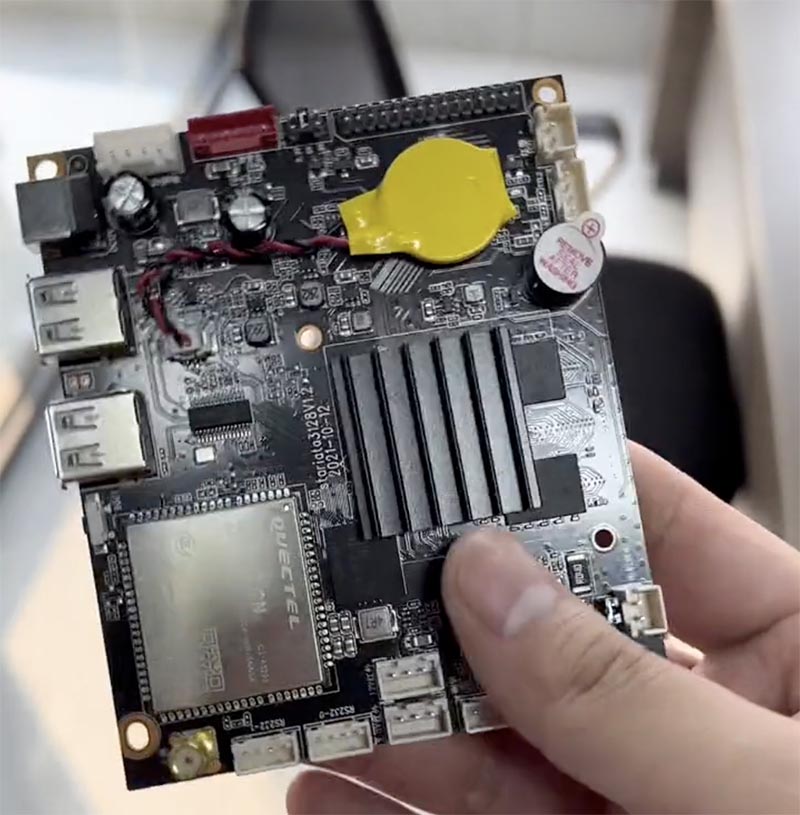ARM-Based SBCs: NXP vs Rockchip for Industrial Android Applications
Compare NXP and Rockchip ARM SBCs for industrial Android applications. Learn about their strengths in multimedia, reliability, long-term supply, and ecosystem support for embedded HMI systems.

Introduction
When developing Android-based industrial HMI systems, selecting the right ARM single-board computer (SBC) is critical.
Among the leading options, NXP and Rockchip stand out as two of the most capable SoC families, both offering a balance of performance, stability, and ecosystem maturity.
This article compares NXP and Rockchip SBCs through the lens of industrial Android deployments, focusing on real-world engineering priorities — longevity, multimedia performance, and BSP support.
⚙️ Industrial Use Cases for ARM SBCs
Whether you’re designing a wall-mounted HMI panel, EV charger, or medical touchscreen terminal, certain design requirements consistently emerge:
- 🧩 Reliable SoC with stable BSP and kernel maintenance
- 🌡️ Extended temperature tolerance for field environments
- 📱 Compatibility with Android 11/12 or Linux distributions
- 💡 Flexible display interfaces — RGB, LVDS, MIPI-DSI, eDP
- 🔄 OTA firmware update and remote device management support
- 🔌 Peripheral integration for UART, GPIO, I²C, and SPI
These demands shape how developers evaluate chipsets and SBC ecosystems for long-term use.
🤖 Rockchip SBCs: Multimedia & Cost-Effective Android
Rockchip has built a strong reputation in the Android ecosystem, offering SBCs that deliver powerful multimedia capabilities at highly competitive prices.
Popular SoCs such as RK3566, RK3568, and PX30 are widely adopted for Android-driven edge systems.
Key Highlights:
- Quad-core ARM Cortex-A55/A72 CPUs
- Native Android 11+ support with full GPU acceleration
- Dual-display capability (HDMI + MIPI)
- Integrated NPU (Neural Processing Unit) for AI/edge inference
- Optimized for touch-based, multimedia, and interactive applications
These features make Rockchip platforms ideal for:
- 🏪 Smart retail terminals and self-service kiosks
- 🏠 Smart home control panels
- ⚙️ Industrial Android HMIs
- 📡 IoT edge computing devices
🧱 NXP SBCs: Stability and Long-Term Supply
NXP’s i.MX series — from the proven i.MX6 to the modern i.MX8M and i.MX93 — remains the benchmark for industrial and automotive-grade SBCs.
They are known for long-term supply, certified reliability, and extensive Linux and Yocto Project support.
Key Advantages:
- Industrial & automotive-grade SKUs (AEC-Q100 certified)
- Hardware-level Secure Boot and TrustZone integration
- 10+ years guaranteed availability for mission-critical systems
- Excellent support for Yocto-based custom Linux builds
- Ideal for medical, transportation, and safety-regulated markets
Typical use cases include:
- 🚘 Automotive infotainment and cluster displays
- 🏥 Medical monitoring and diagnostic equipment
- 🏭 Factory automation and process control systems
- 🚀 Aerospace or defense-certified electronics
📌 Quick Decision Guide
| Feature | Rockchip SBCs | NXP SBCs |
|---|---|---|
| Android UI Support | ✔ Excellent (4K + GPU-accelerated) | ➖ Basic |
| Cost Efficiency | ✔ Very High | ➖ Moderate |
| Long-Term Availability | ➖ 5–7 years typical | ✔ 10–15 years guaranteed |
| BSP Customization | ✔ Open SDK (Android/Linux) | ✔ Yocto Project & mainline Linux |
| Certifications | ➖ Limited | ✔ Extensive (automotive/medical) |
In short:
- Rockchip wins on performance-per-dollar and Android optimization.
- NXP dominates where longevity, safety, and certifications are top priorities.
👉 For more about Rockchip SoCs and industrial SBCs, check out our detailed Rockchip vs NXP breakdown.
🧩 Selecting the Right Platform for Your Project
When evaluating which ARM-based SBC to adopt, consider the following factors:
- Product lifecycle — how long do you plan to maintain the system?
- Regulatory requirements — does your industry demand certification or compliance?
- Software ecosystem — do you need Android or a custom Yocto Linux build?
- Multimedia complexity — is your UI multimedia-heavy or minimalist?
- Cost structure — will scalability and BOM optimization matter more than certification?
🚀 Final Thoughts
If you’re building Android-based industrial SBC systems — such as digital signage, HMI dashboards, or IoT gateways — Rockchip SBCs offer unbeatable value, performance, and ecosystem flexibility.
On the other hand, NXP SBCs remain the gold standard for mission-critical, regulated, and safety-compliant environments that demand longevity and security.
Both ecosystems continue to evolve — and with growing Android integration in industrial devices, the line between consumer-grade and industrial-grade SBCs is rapidly blurring.